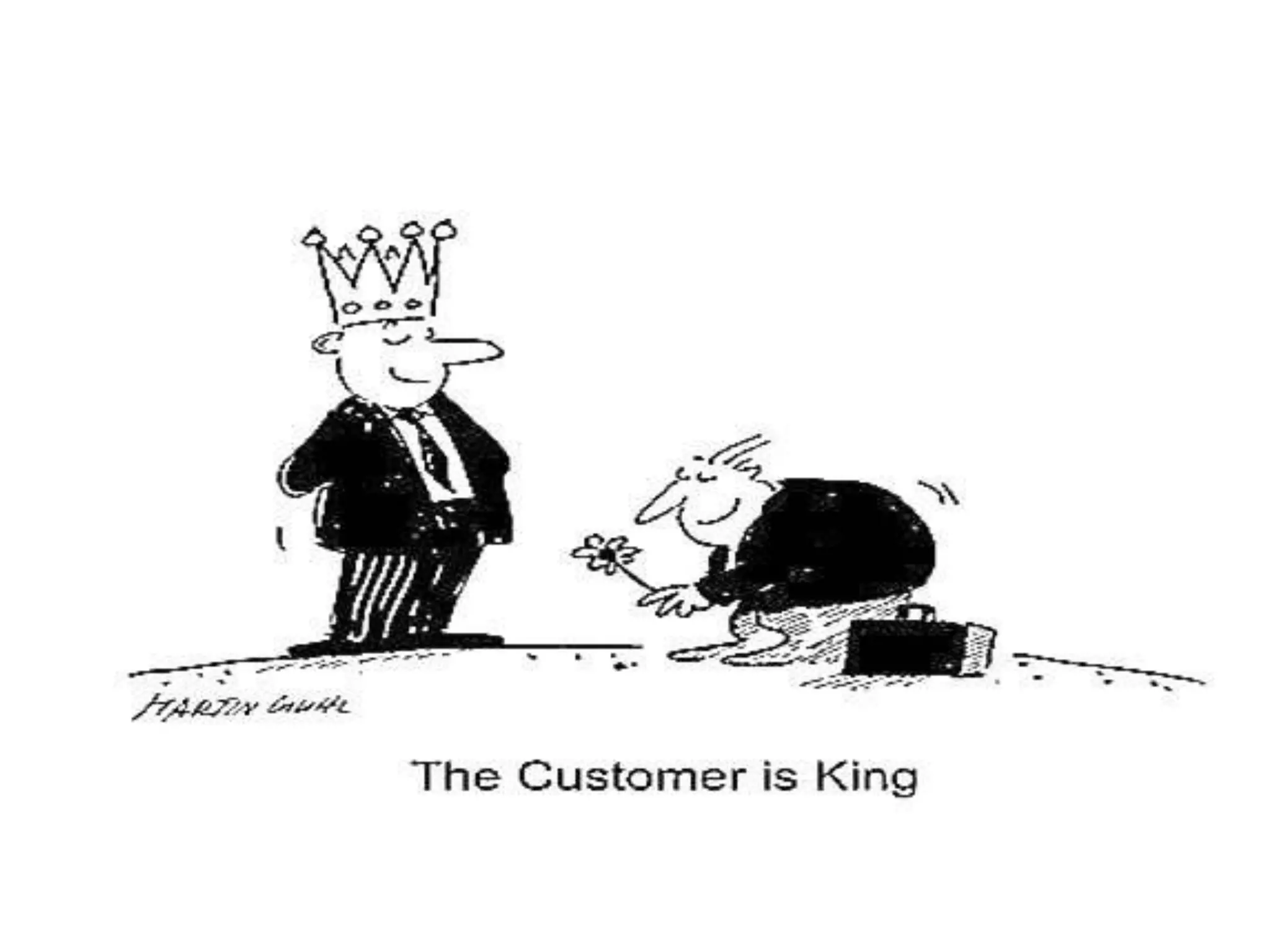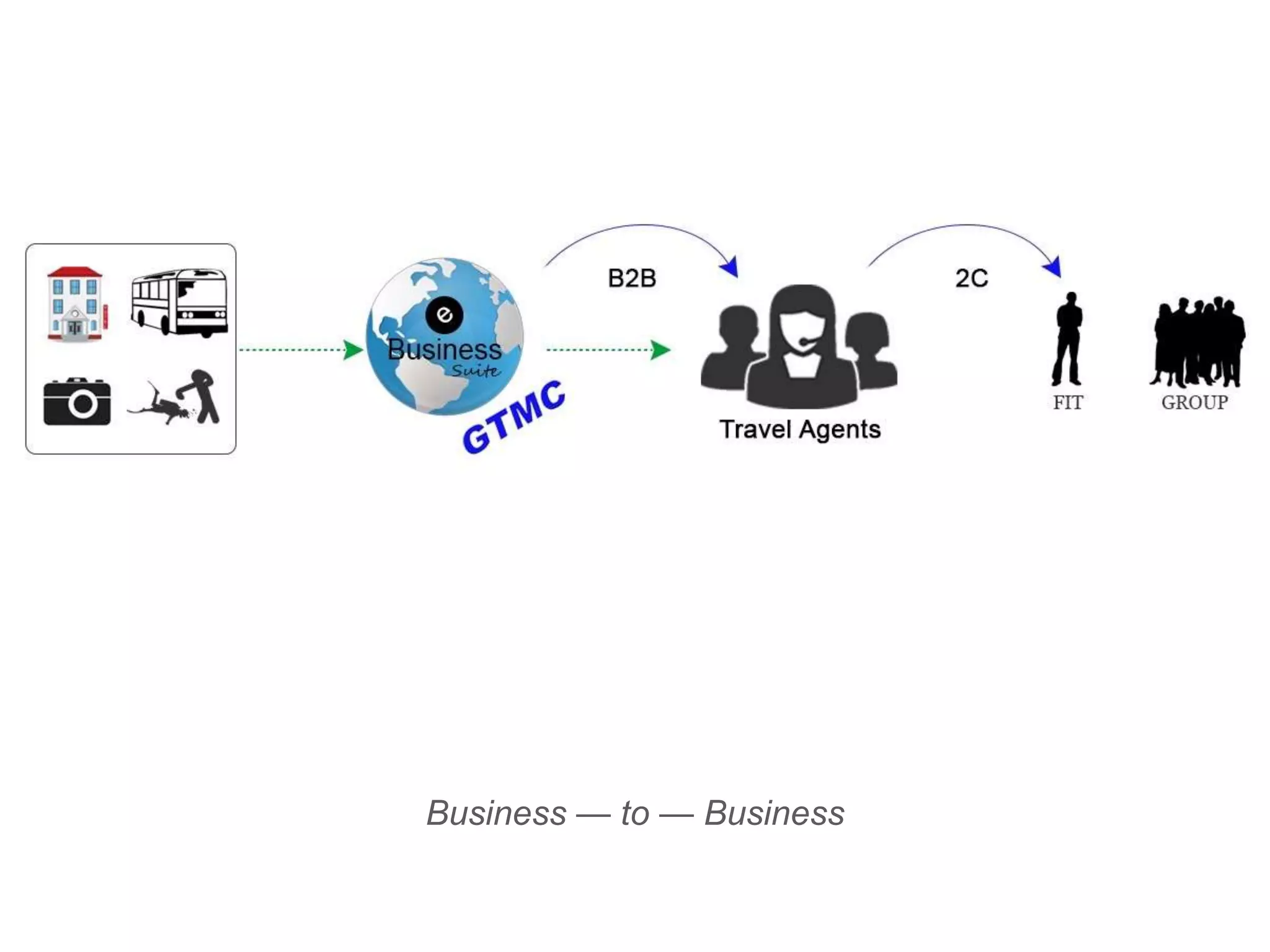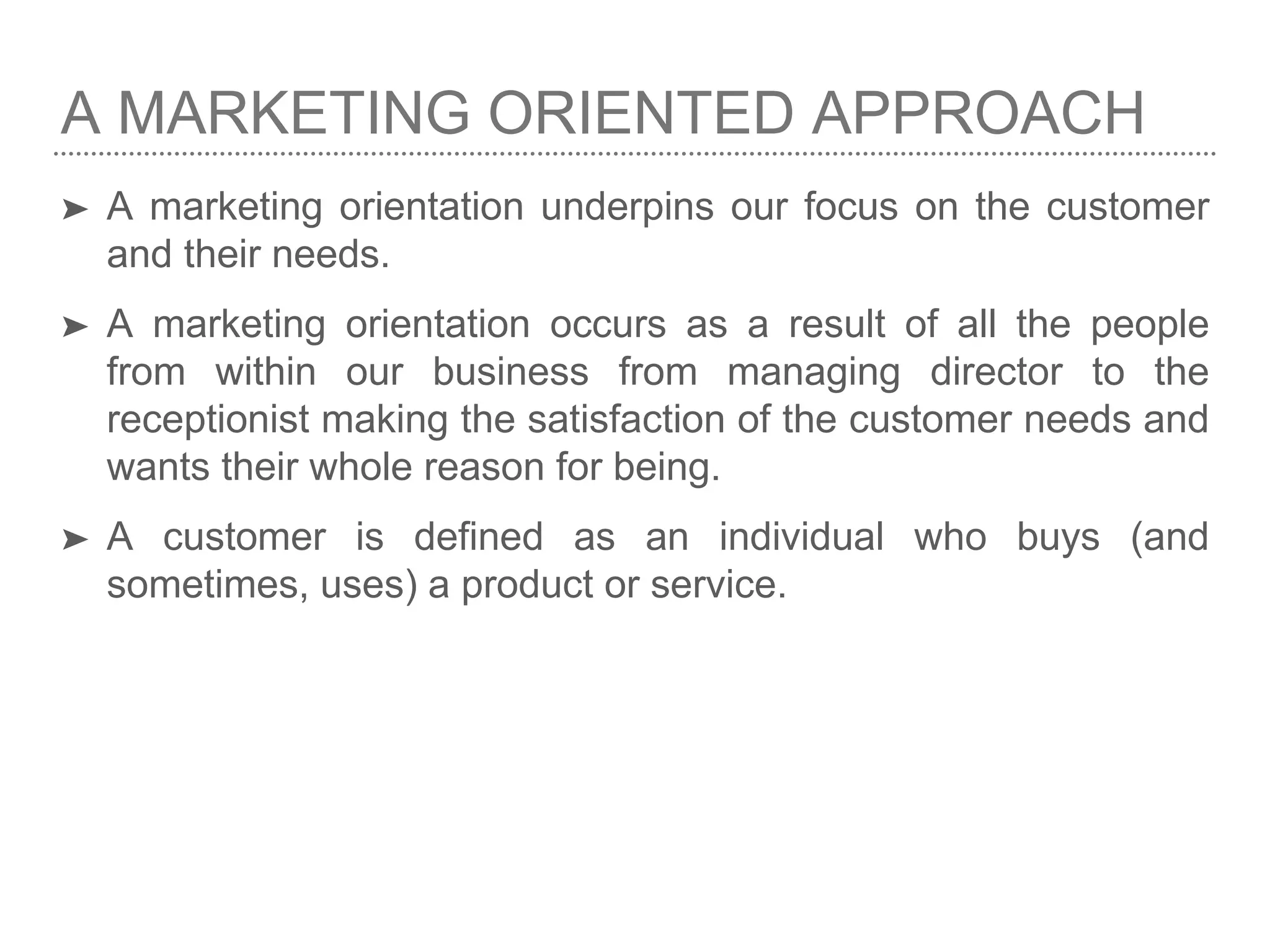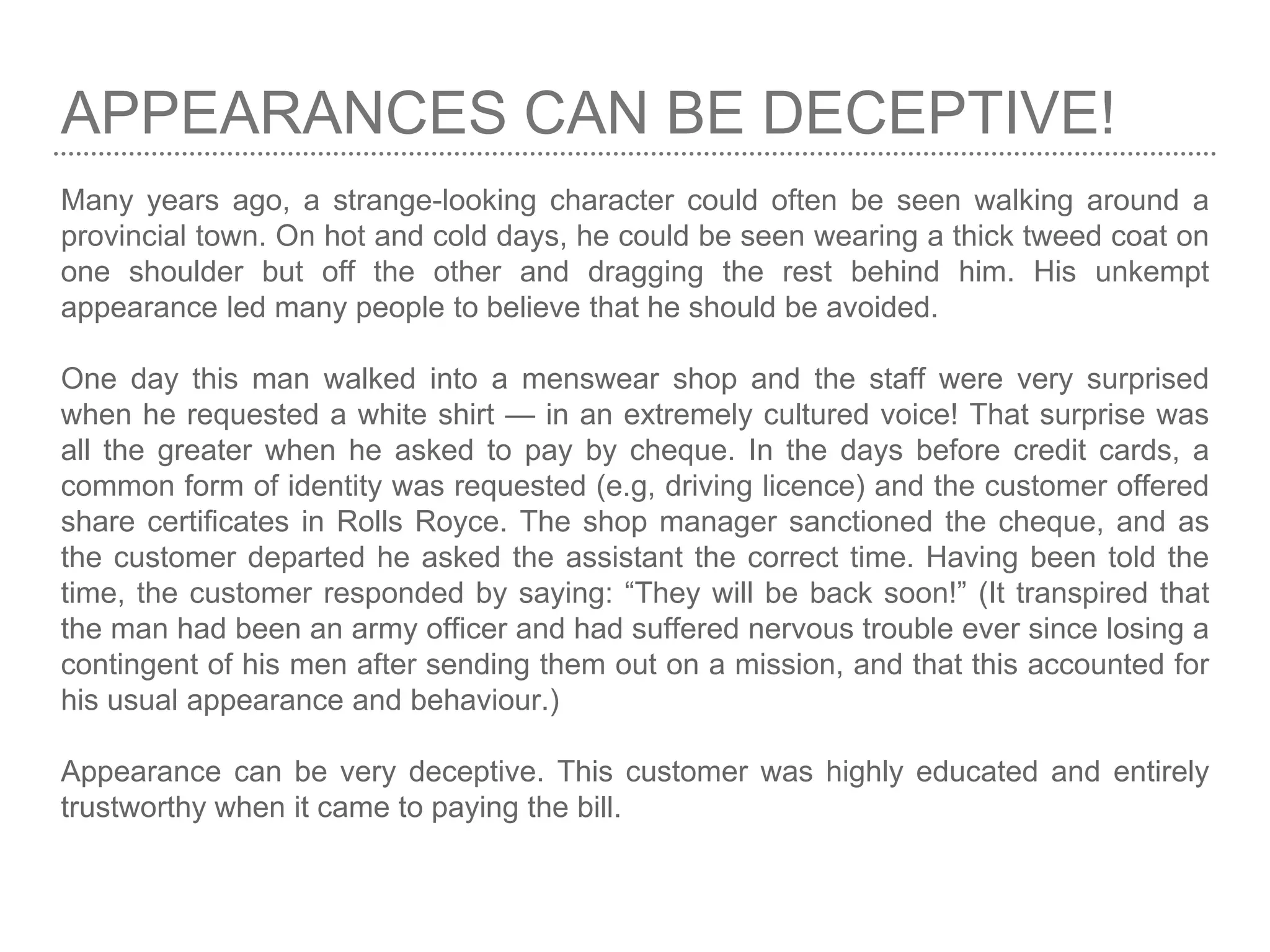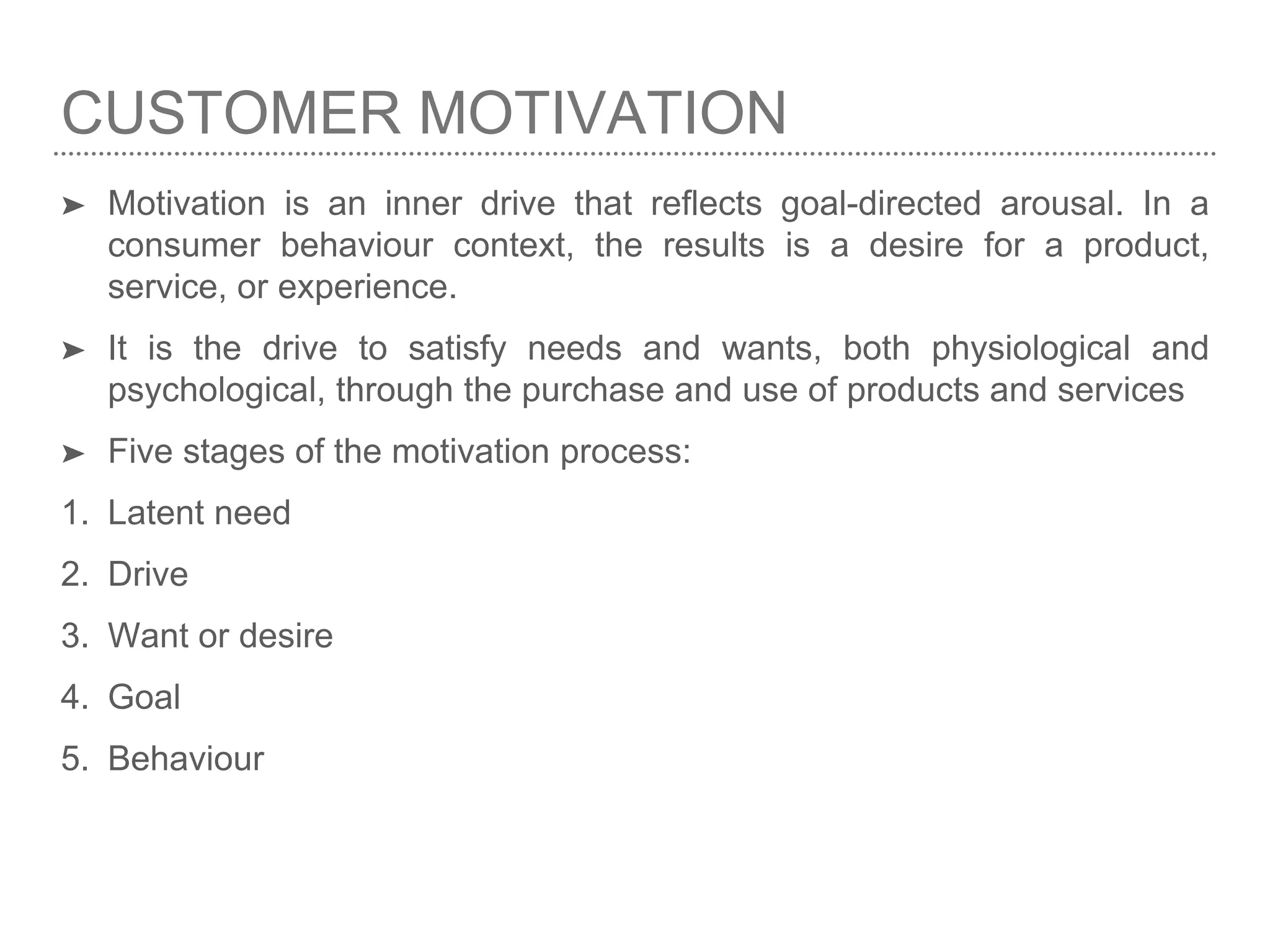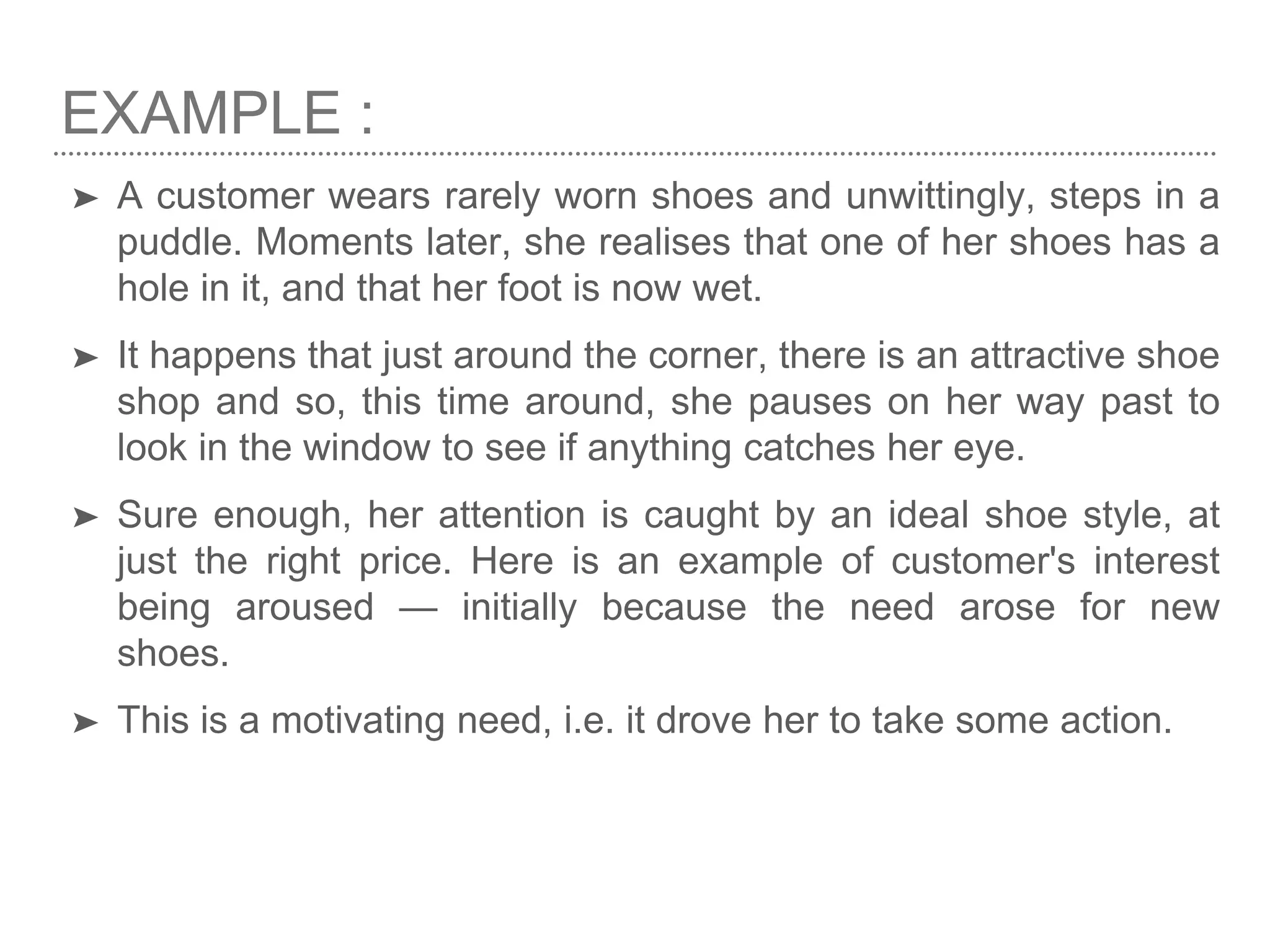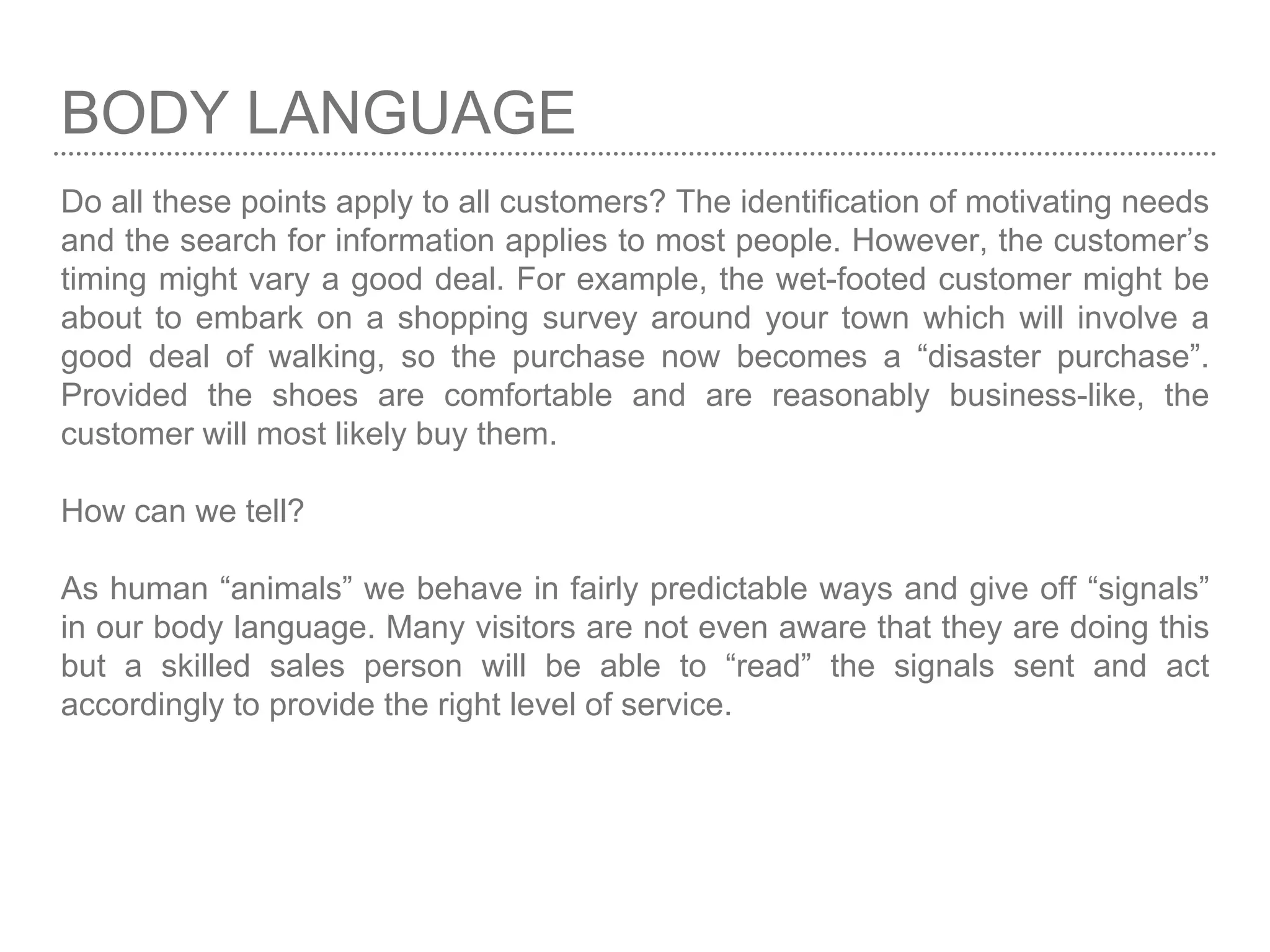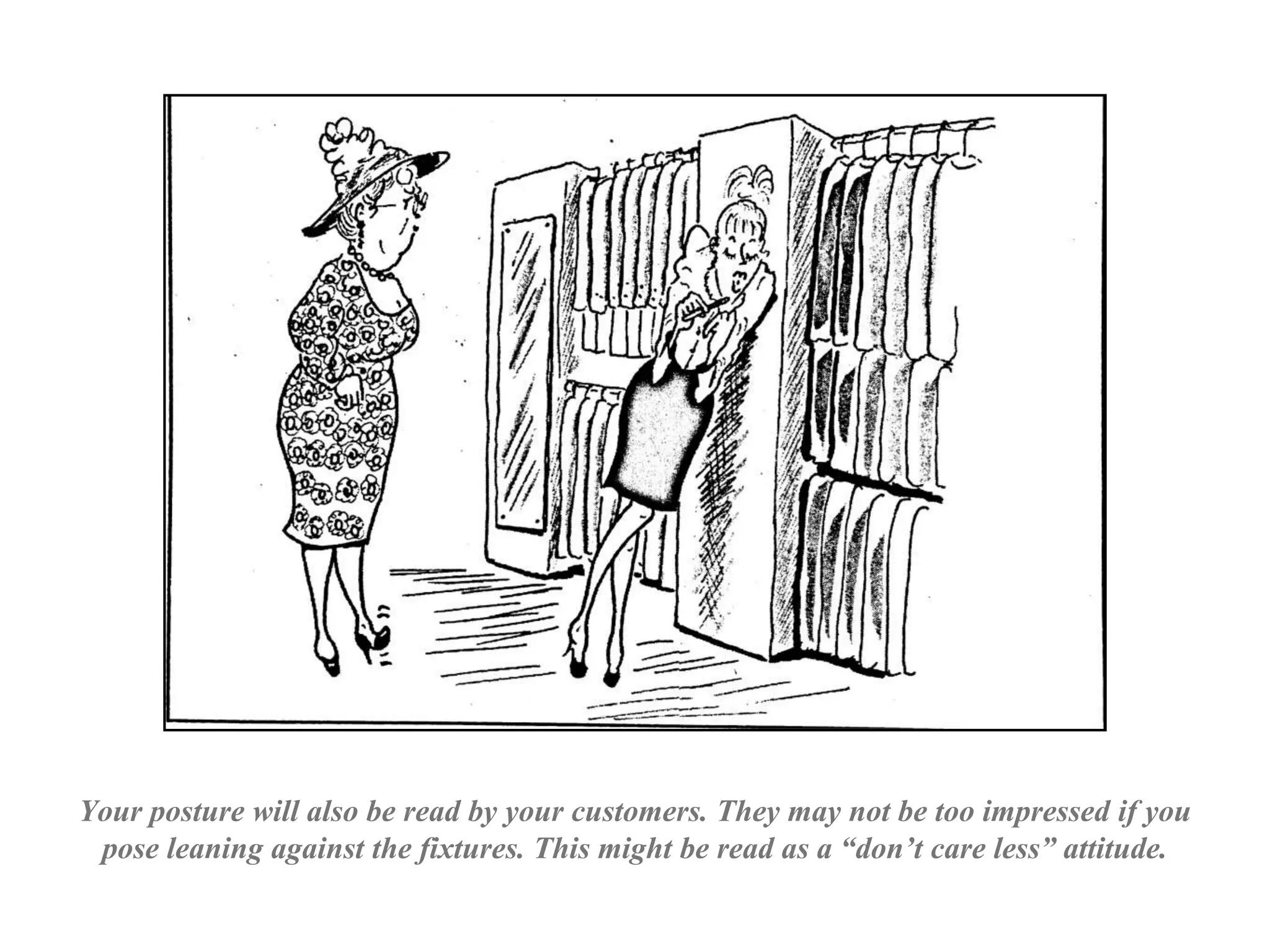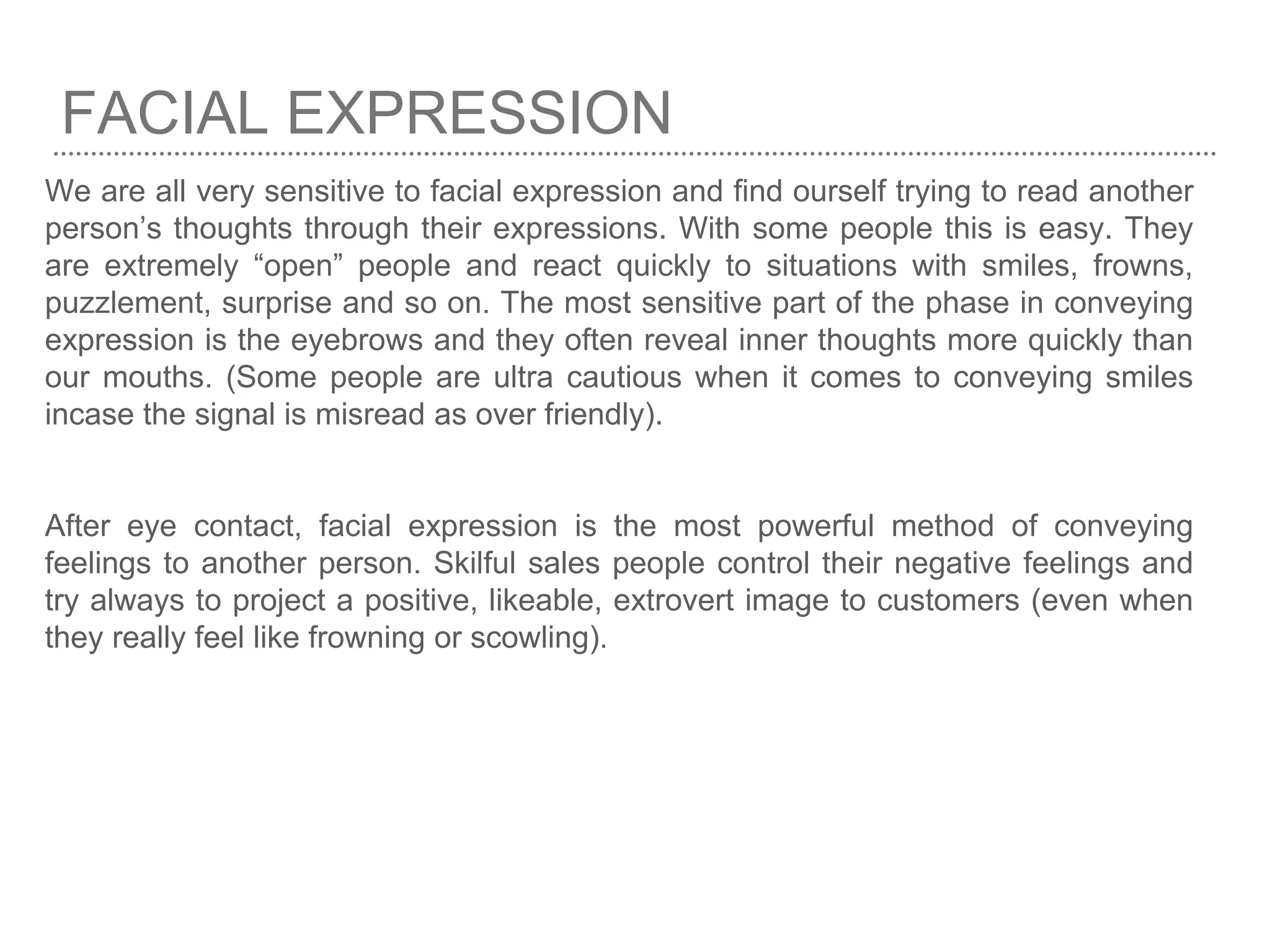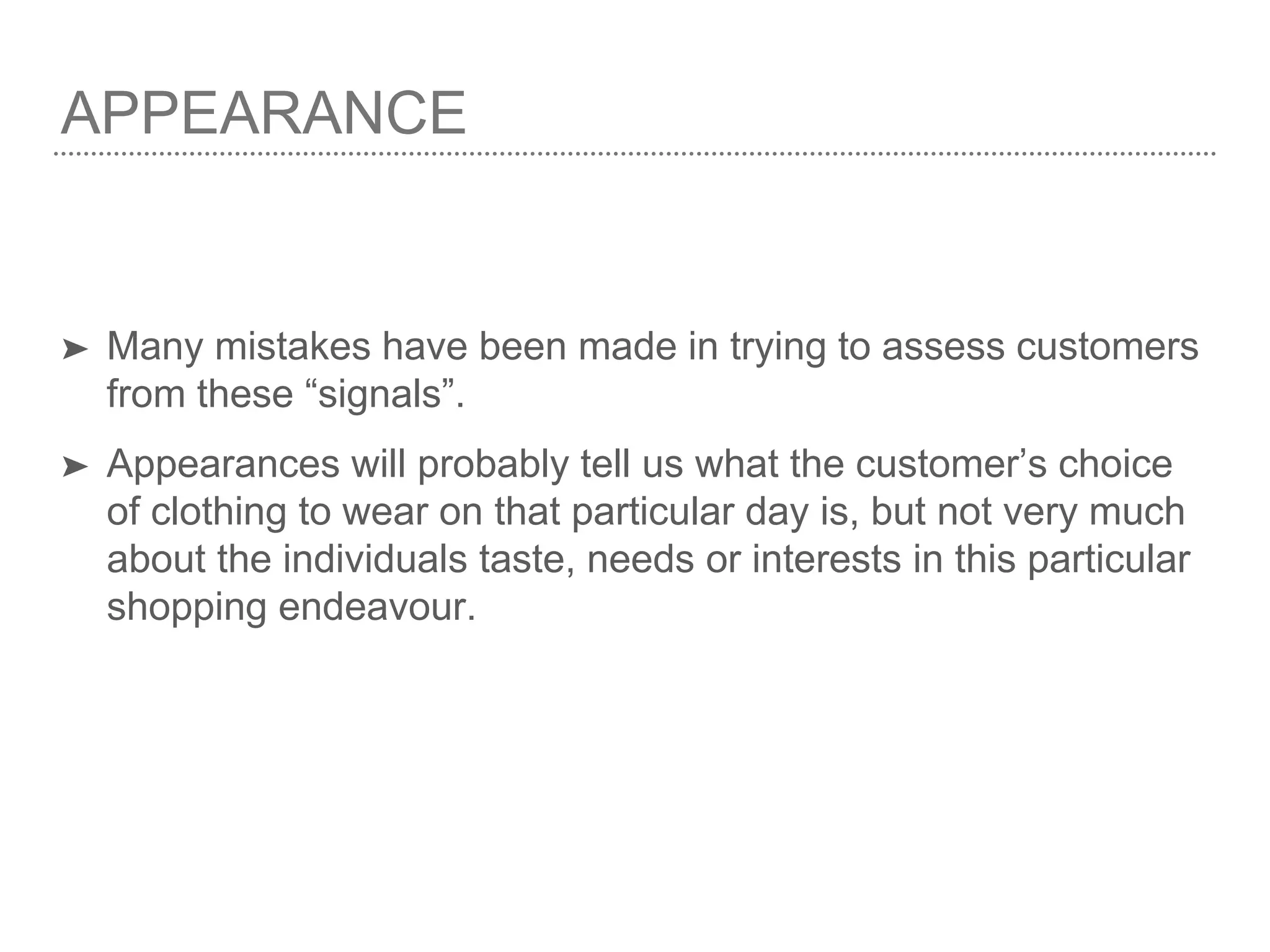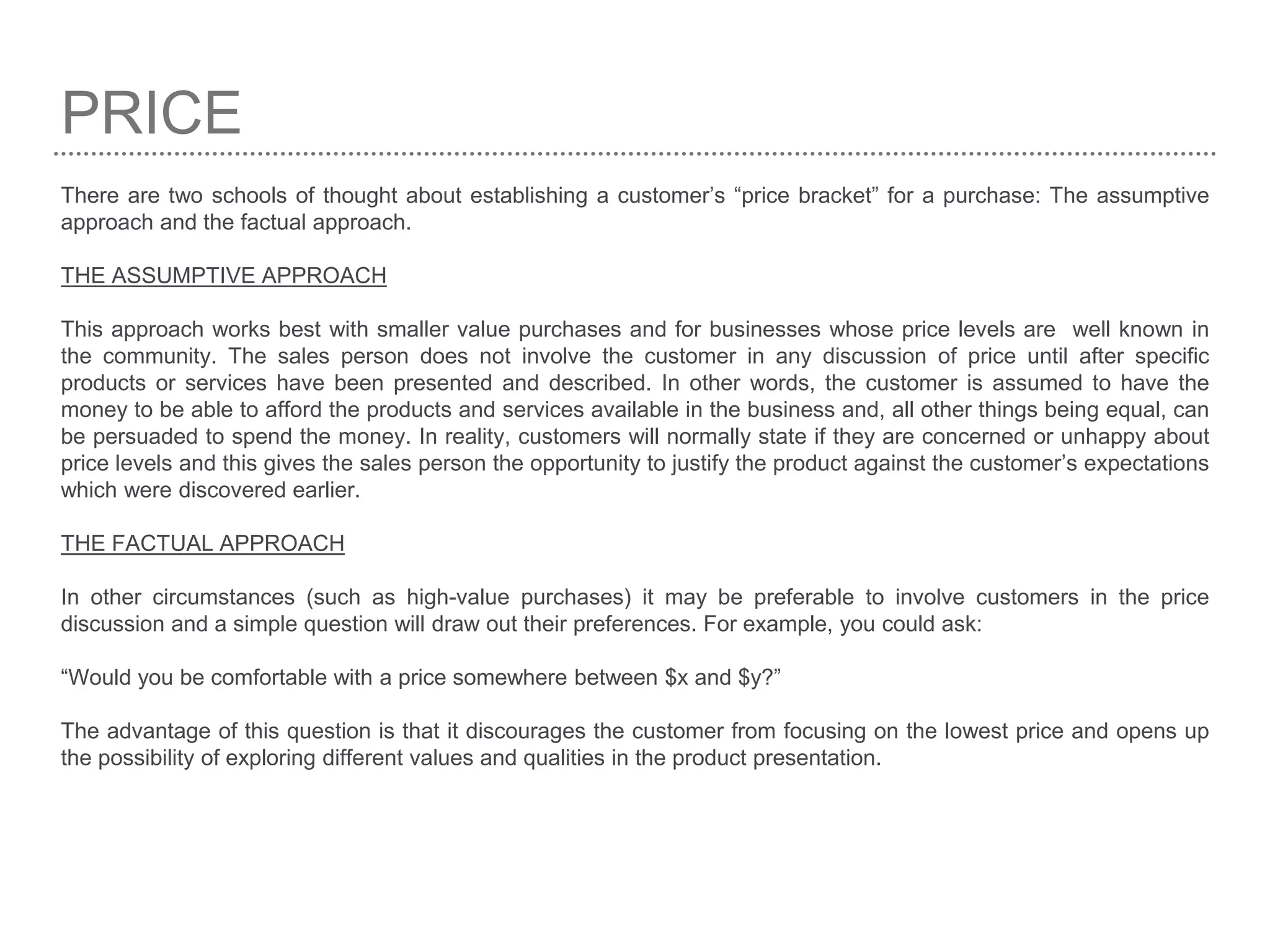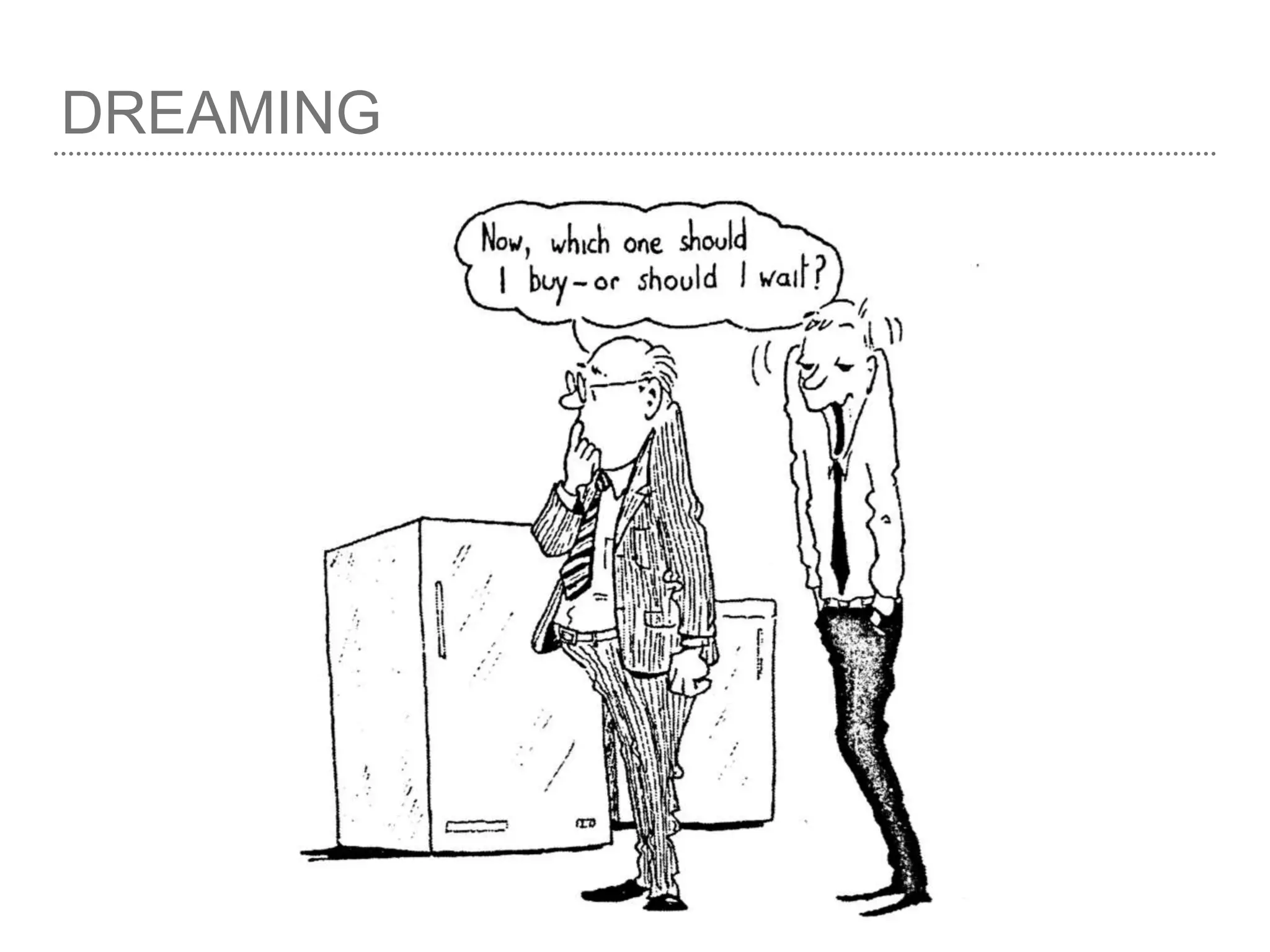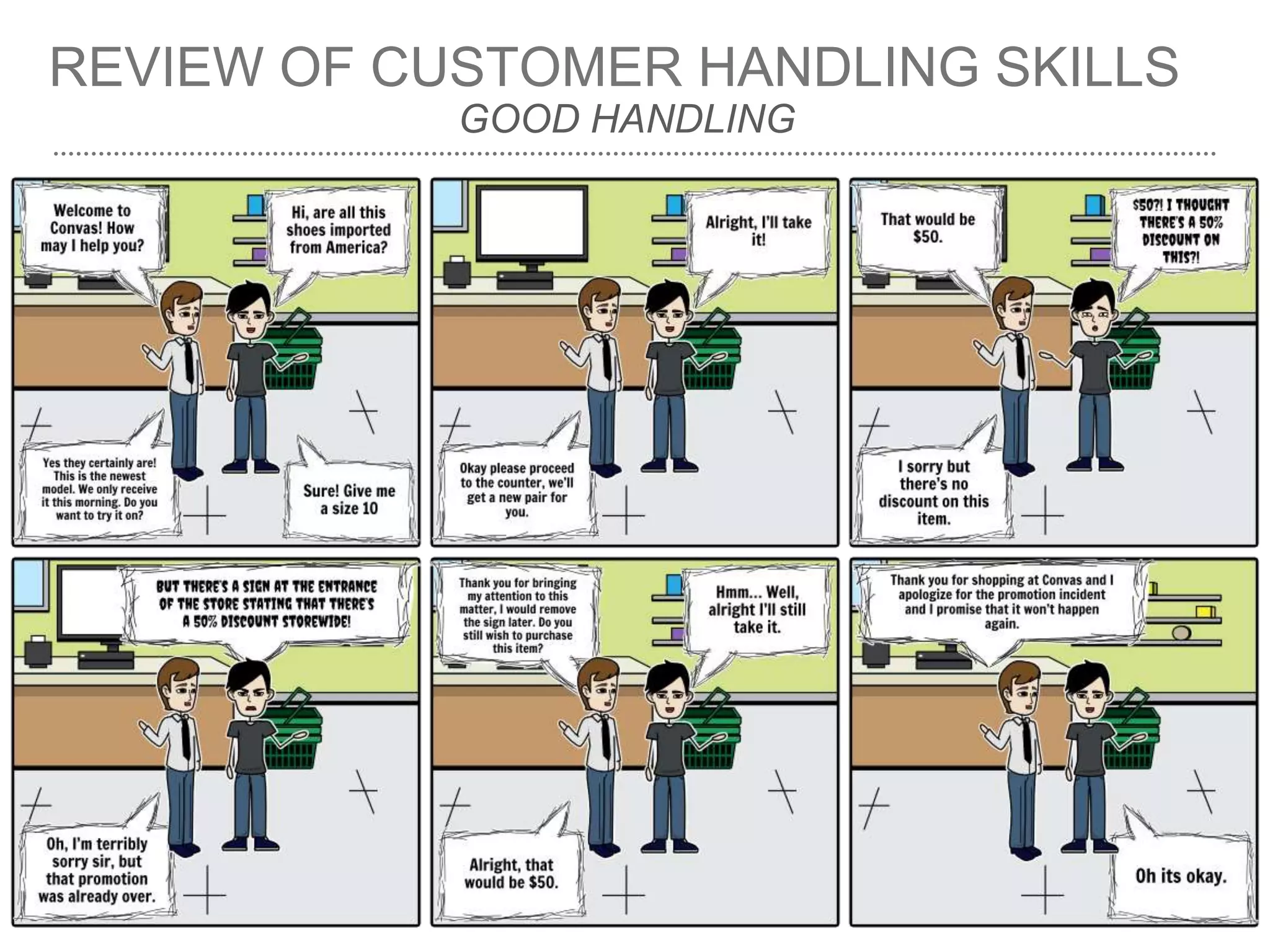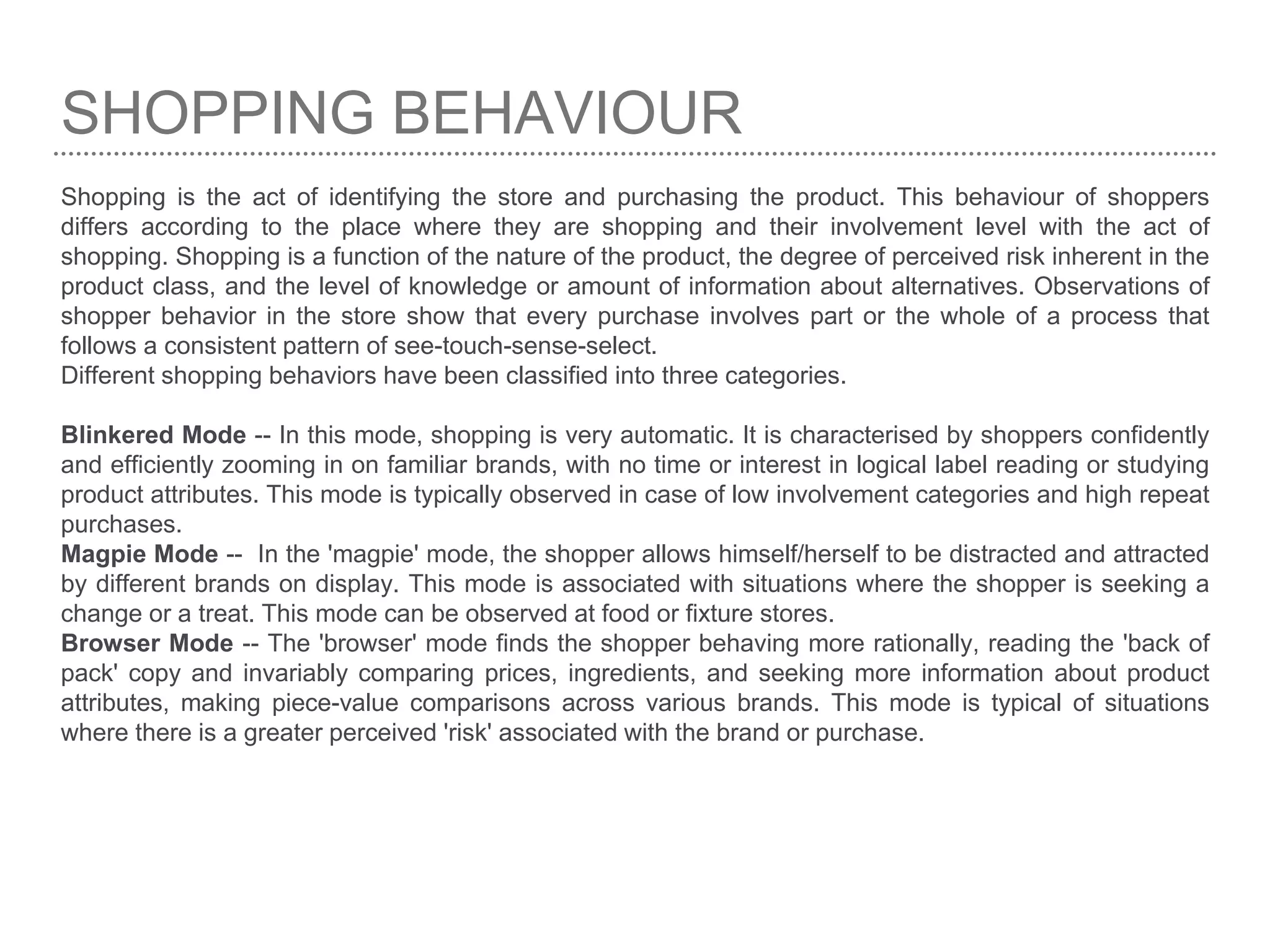The document discusses understanding customers by analyzing their needs, wants, expectations, and motivations. It distinguishes between customers and consumers, categorizes different types of customers like business-to-business and business-to-consumer. It also discusses reading customers' body language through their posture, eye contact, facial expressions and other cues to understand their interests and diagnose their needs. Salespeople are advised to actively listen to customers and ask open-ended questions to understand price preferences and qualify customers for the right products.


